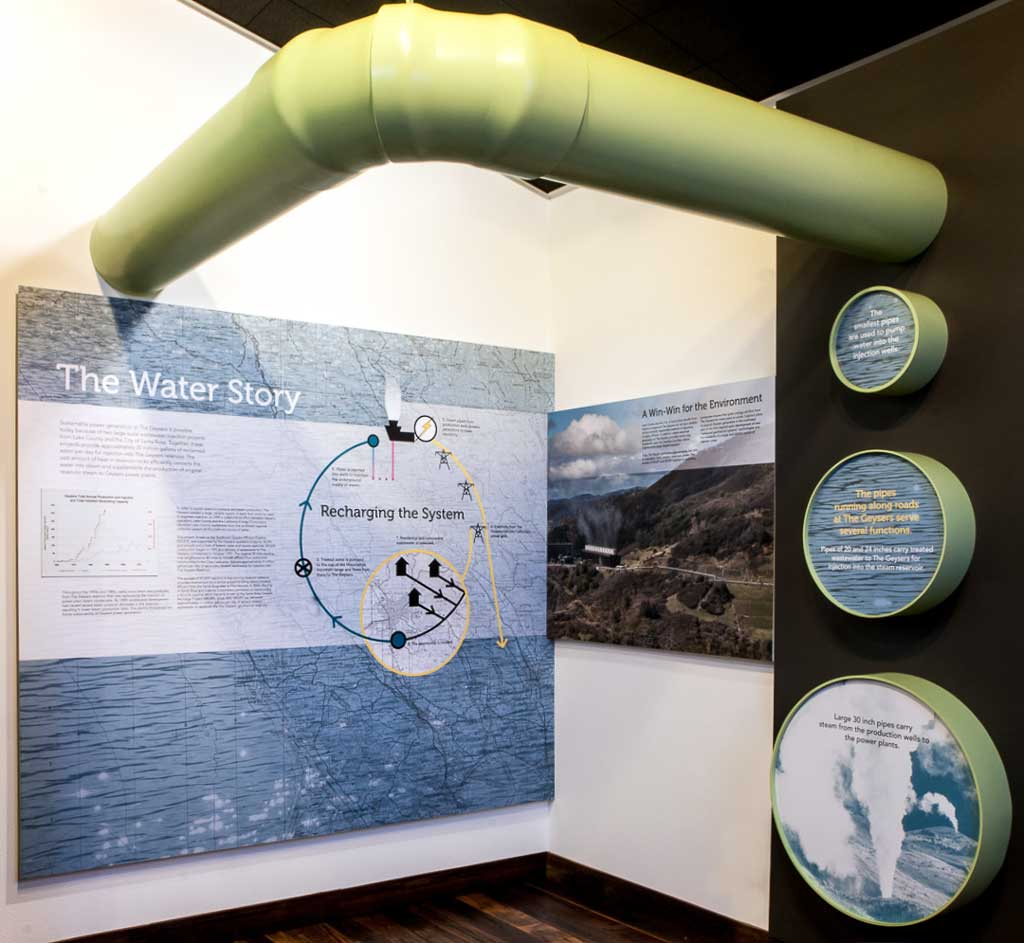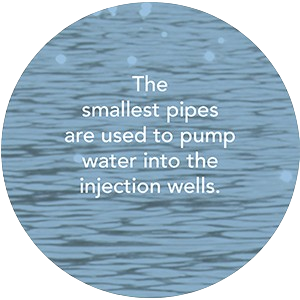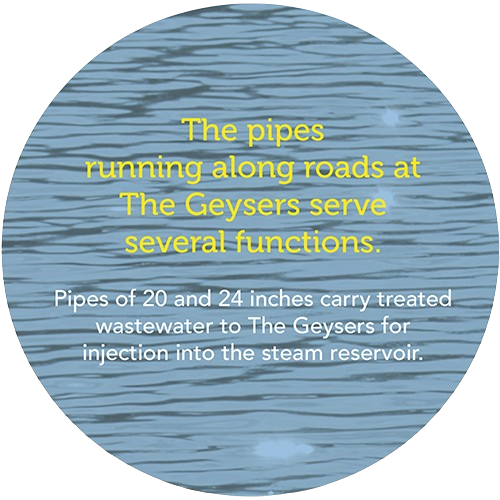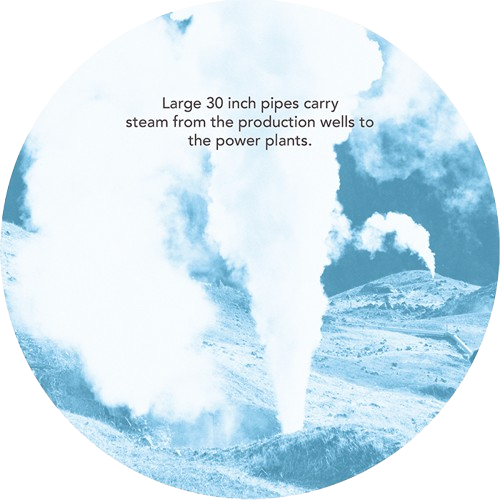The Geysers stands as a world leader in sustainable geothermal energy production, thanks to two visionary recycled water partnerships with Lake County and the City of Santa Rosa and its regional partners. Together, these projects deliver reclaimed water daily for injection into The Geysers’ underground reservoir while providing a weather independent and environmentally responsible effluent discharge solution for nearby communities.
A Challenge Emerges: Declining Steam & Growing Demands
Throughout the 1970s and 1980s, The Geysers was operated by multiple parties, resulting in vastly more steam being extracted from the reservoir than replaced. By 1989, accelerated development had caused severe steam pressure decreases, resulting in lower steam production rates. This decline threatened the future sustainability of The Geysers.
Recharging the System
To sustain reservoir pressure and steam production, The Geysers needed a large, reliable supply of water that could be used to augment steam supply via injection into the geothermal steam fields. In 1990, a collaborative effort between The Geysers operators, Lake County and the California Energy Commission identified Lake County wastewater from the southeast regional collection system as the preferred source of water.
This project, known as the Southeast Geysers Effluent Pipeline (SEGEP), was supported by The Geysers operators, Calpine and NCPA and a host of federal, state and county agencies. Construction began in 1995, and delivery of recycled water to The Geysers commenced in October 1997. The original 29-mile pipeline (since lengthened to 40 miles) collects effluent from a total of four treatment plants serving 22,000 people and 360 businesses in ten Lake County communities. This represents 85% of all the effluent produced in the county.
The success of SEGEP injection in maintaining reservoir pressure provided momentum for a similar recycled partnership between Calpine and the City of Santa Rosa known as the Santa Rosa Geysers Recharge Project (SRGRP).
In the 1980s and 1990s, the City of Santa Rosa struggled to keep pace with increased flows into the Laguna Treatment Plant and to comply with increased restrictions on its discharges into the Russian River. The Geysers Recharge Project initially was considered an unlikely solution to the recycled water problems the city faced. In partnership with Calpine, it turned out to be an efficient and environmentally friendly solution.
The City of Santa Rosa and Calpine Corporation partnered on constructing the 42-mile pipeline which became known at the Santa Rosa Geysers Recharge Project (SRGRP). The $220-million project was completed in 2003. For over two decades, this project has benefited the region by delivering recycled water from Santa Rosa Water’s Laguna Treatment Plant to recharge Calpine’s geothermal steamfields at The Geysers and increase the amount of clean energy produced. This partnership produces enough clean and renewable electricity to power 100,000 homes in the North Bay. In addition to using the region’s recycled water to produce clean power, the project also protects the Russian River by almost entirely reducing discharges to the waterway while providing the City of Santa Rosa a weather independent discharge solution.
System Infrastructure: Pipes with a Purpose
Pipes & Their Roles:
- Small pipes: Pump water to injection wells.
- 20-24” pipes: Carry treated recycled water for injection.
- 30” pipes: Transport steam to power plants.
Conclusion: A Win-Win for the Environment
The Geysers’ water recycling partnerships are a model for how innovative, collaborative solutions can solve multiple community and environmental challenges at once. By transforming waste into renewable energy, The Geysers sets the standard for sustainable resource management and climate action.



